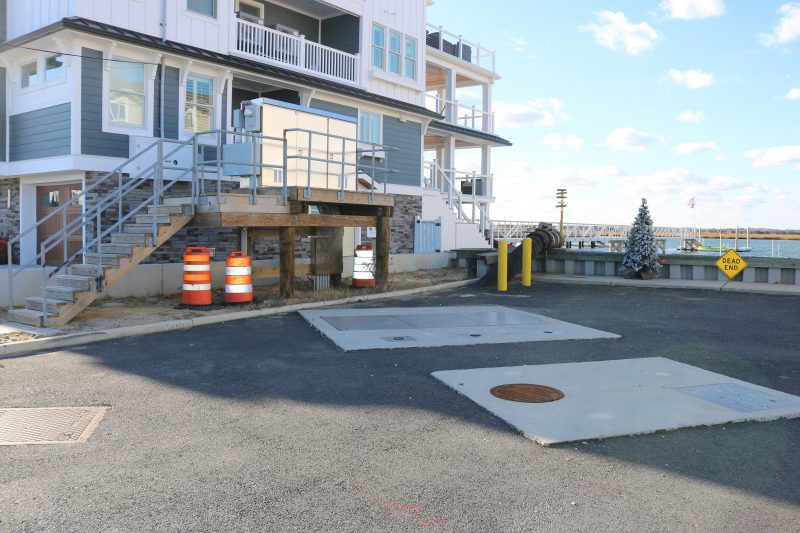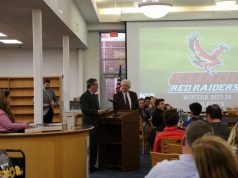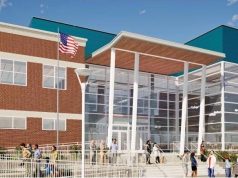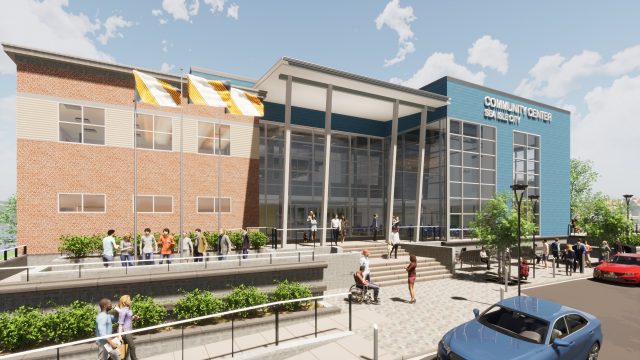
By DONALD WITTKOWSKI
City Council gave its approval Tuesday for a proposed $20 million community recreation center, just two months after the governing body fell short of enough votes for the project’s funding plan amid concerns about the cost.
In a 4-0 vote, Council formally threw its support behind the community center as well as plans to fund it using a city bond ordinance backed by revenue from local property taxes.
The vote represented a big victory for Mayor Leonard Desiderio, the project’s chief proponent. It reversed a setback that Desiderio suffered in October when Council initially balked at the community center’s cost and funding plan.
“After several years of study, analysis, conceptual planning, design development, and public input, it’s time to build this project,” Desiderio said while urging Council to approve the plans.
The next step is to move forward with construction documents in order to go out to bid for the project. Construction is tentatively scheduled to begin next summer and take 15 to 18 months to build, City Business Administrator George Savastano said.
In October, Council was split 2-2 on a vote for a bond ordinance to finance the project. It was far short of the “super majority” of four affirmative votes required to authorize bonds for the funding package.
Council members Jack Gibson and Mary Tighe, who cast the dissenting votes in October, reversed themselves Tuesday to move the project along. William Kehner and J.B. Feeley also voted in favor of the project. Councilman Frank Edwardi was absent from the meeting.
Gibson and Tighe said all along that they support the concept of a new community recreation center, but raised objections about the proposed cost. They noted that the estimated price tag had climbed from $15 million to $20 million this year alone. The price increase has been blamed on the rising cost of construction materials during the pandemic.
In explaining his decision to back the project now, Gibson said he was worried that by waiting any longer, the cost could escalate even more.
Tighe repeated her concerns over whether Sea Isle City has enough residents and enough community events to justify the proposed size of the project.
“The question is, do we need that much of a building for the 2,000 people we have year-round?” she asked.
Yet Tighe joined the other Council members in voting for the project. At the same time, she noted that she is challenging Desiderio’s administration “to fill up that building and keep it busy.”
Desiderio responded by saying, “Thank you, and we accept the challenge.”

The community center was the focus of a town hall meeting Dec. 4 attended by more than 100 residents. Of the nearly 30 people who asked questions or commented about the project during the meeting, most said that they supported having a combination community center and recreation facility in town.
There were pointed questions, though, about the project’s cost and impact on local tax rates. The city’s auditor, Leon Costello, told the audience that the community center would have only a “minimal impact” on local taxes. He estimated it would cause local taxes to increase about $90 annually on a home assessed at $1 million.
Desiderio has repeatedly characterized the project as a much-needed amenity that has broad community support and will serve as one of the city’s centerpieces for decades to come.
In contrast to the heavily attended town hall meeting on Dec. 4, there were few members of the public in attendance during City Council’s vote Tuesday on the community center.
“It’s a shame we don’t have more people here,” former Councilman John Divney said in public remarks while gazing at the near-empty Council chambers.
Speaking as a member of the public, Divney reiterated concerns he has had in recent months about the community center’s cost and whether it will be used enough by the community to justify the size and amenities.
Divney supports the project, but wants the city to conduct an analysis of the cost and how much the building would be utilized by local residents.
“We’re asking, how do you get to the $20 million?” Divney said to the Council members.
Gibson promised Divney that the city will supply him and the rest of the public with as much financial information about the project as possible.
Local resident Toni Grdinich, the only other member of the public who spoke at the Council meeting, strongly voiced her support for the community center.
Grdinich said the project is certain to create economic benefits for the city and will also expand the types of community activities for young people to enjoy.
“In order to keep this town, you need to foster a sense of community,” she said.
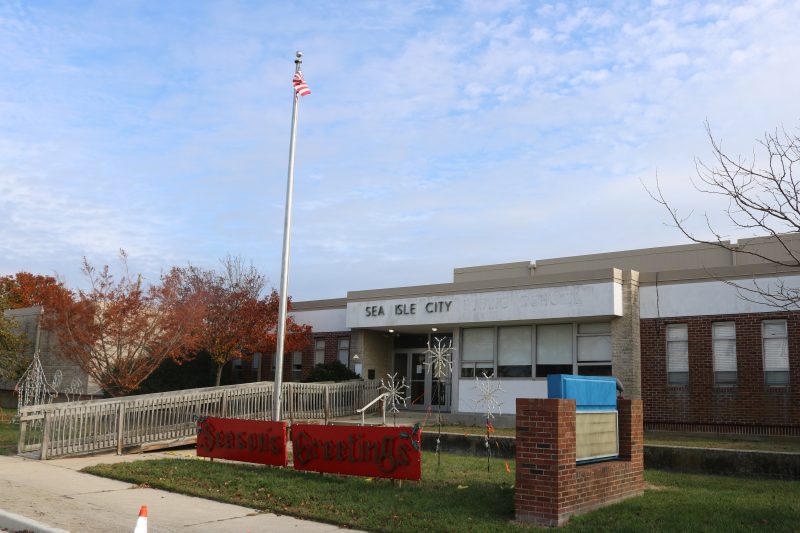
Plans call for demolishing the city’s former public school at 4501 Park Road to make room for development of the community center. The new building would occupy the block bordered by Park Road, Central Avenue, 45th Street and 46th Street.
The two-story building’s proposed design reflects its dual role as a community center and recreation facility. There would be a large gymnasium, indoor walkway and workout space for recreation. The building would also include space that local community groups could use for meetings, events and other activities.
Parking would be built both underneath the community center and next to it at ground level. The building itself would be constructed above flood levels to protect it from coastal storms.
In another vote Tuesday, Council approved the city’s new five-year, $54.2 million capital plan, a broad blueprint for improvements to the beaches, bayfront, roads, Promenade and other parts of town.
The capital plan represents a framework for the infrastructure projects the city hopes to complete from 2022 to 2026. Council will need to adopt funding ordinances in the future to finance individual projects.
The most expensive individual project in the capital plan is the community recreation center. The plan proposes spending $20 million in 2022 for the building.
Stormwater pumping stations are other big-ticket items in the capital plan. They would help protect flood-prone sections of the city by channeling stormwater back into the bay much faster than it would normally take to drain off the streets after a coastal storm.
Under the capital plan, the first pumping station would be built in 2022 at an estimated cost of $3 million. It would generally protect the area from 45th to 47th streets, from Landis Avenue to the bay.
Sea Isle plans to follow up with another pumping station in 2023 for the area from 42nd to 44th street, from Landis to the bay. That project would cost an estimated $4 million.
The capital plan also proposes to spend $3 million in 2025 and another $3 million in 2026 for two more pumping stations. The proposed locations have not yet been announced.
